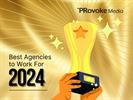Paul Holmes 14 Jul 2001 // 11:00PM GMT
SonoSite, a manufacturer of hand-carried ultrasound systems, was approached by the A Heart for Sports Foundation, a new non-profit organization dedicated to raising awareness of asymptomatic heart disease (such as hypertrophic cardiomyopathy – HCM – an enlarged heart) and reducing the risk of sudden death among young athletes nationwide, to sponsor the Foundation’s pilot cardiac screening program at Fountain Valley High School in Southern California on Saturday, September 16, 2000. The Foundation’s mission to reduce sudden deaths includes advocating an echocardiogram (ultrasound scan of the heart) as an adjunct to pre-sports physical examinations. Until now, this has not been feasible because ultrasound equipment was expensive and difficult to transport.
Although the incidence of death on the athletic field is relatively low, each tragedy causes immeasurable trauma for the families, friends and communities of its victims. SonoSite decided to support the Foundation’s screening initiative because of the importance to public health, and because enabling cardiac screening represents an ideal application of its ultra-portable technology. SonoSite’s hand-carried systems are approximately the size of a laptop computer, versus a “traditional” ultrasound system that can weigh several hundred pounds and must be transported on a large cart. The Foundation agreed to use the company’s SonoHeart™ personal cardiac imaging device – a unique high performance system that weighs only 5.4 pounds, has quality imaging equivalent to high-end machines, and is only 1/10th the cost of traditional ultrasound equipment.
challenges:
With less than three weeks to plan and execute the program, we had to overcome the challenges inherent in working with a “new born” advocacy group and the agendas of its supporters. Additionally, due to the Foundation’s focus on the personal tragedies involved, creating a branded role for SonoSite’s ultrasound diagnostics proved to be challenging. The pilot screening event was dedicated to Steven “Scotty” Lang, a Fountain Valley High School football player who died in November 1999 during practice drills. Scotty was a victim of HCM. Less than one year later, the event day was emotionally laden for the community and the 700 former classmates, team members, families and friends that turned out in memory of Scotty. It was imperative to be highly sensitive to balancing the needs of the local participants who had come together because of their loss, while capitalizing upon the opportunity to raise awareness that future tragedy could be prevented with our client’s technology.
A potential barrier to the future development of broad scale screening initiatives (a long-term goal of the Foundation) was convincing the medical community to more readily accept using echocardiograms to screen for HCM and other “silent” heart conditions that can cause sudden death, even though organized medicine has not yet formally reached this conclusion. While SonoSite was not mounting a direct campaign to change screening guidelines, our research found that the only position on the matter in the U.S. is the “Cardiovascular Preparticipation Screening of Competitive Athletes” statement issued by the American Heart Association in 1996. It concludes that due to the low prevalence of HCM and the high cost of conducting screenings (due in large part to the expensive and unwieldy ultrasound systems that were commonplace at the time of issuance), that broad scale screenings are not feasible. Therefore, FH counseled SonoSite and the Foundation to invite thought-leading physicians to participate the event in order to start gathering support for the newly feasible adjunct to the pre-participatory physical examination.
research:
To provide an evidence-based rationale and a sense of urgency for reducing sudden death risks among young athletes, Fleishman-Hillard conducted research to identify quantifiable and qualitative issues:
strategic approach:
Our SonoSite-focused media strategy was to use the emotion and local event as a content platform to enable us to take the technology story national. The rationale of this approach was to gain SonoSite branded real estate to give its product technology and the role of ultrasound in the physical exam a more prominent position in the resulting coverage (which was difficult locally because of the inherent drama of the event itself, which was billed as an antidote to the death of a local athlete), and so that the company would have control over a branded message delivered to national health news media. The SonoHeart™ personal cardiac imaging device was positioned as the enabling technology that, for the first time, could make broad scale screenings practical and feasible.
Additionally, we used the screening program as a customer relationship-building opportunity for SonoSite with the following tactics:
In order to elicit support for the pre-participation echocardiogram examination, we engineered the involvement of thought-leader physicians:
project execution:
A Heart for Sports Foundation spearheaded the initiative by working with the local school and the family of the student to whom the screening was dedicated, and worked to generate community participation. Fleishman-Hillard acted as a liaison between SonoSite, the Foundation, and the thought-leading cardiologists who volunteered their time to supervise the event. Legal issues (inform/ consent, parental permission and organization/professional liability) were addressed with information packets and permission forms sent to parents prior to the event. We also developed a contingency plan to counsel students and their families if abnormalities were suspected during the screening event.
We segmented our media outreach into three angles:
Local: We reached out to local outlets and area bureaus of national outlets (print, online, broadcast, online media and wire services) to promote the event and secure attendance at the screening by emphasizing the community’s involvement in the event and that it was dedicated to the death of a local athlete.
National: We took the story to national journalists by tying the issue of sudden deaths among young athletes to the local event in Southern California, in order to create a platform to promote the enabling SonoSite technology that made the screening feasible, and the necessity for screening as part of a student athlete’s “regular” physical exam. We hired an AP-stringer photographer to cover the event and submit same-day photos to the wires; we also filmed and distributed same-day b-roll.
Sites of other sudden deaths: Based upon our literature survey on the sudden deaths of young students in athletic activity, we reached out to journalists in the areas where the deaths had been reported to issue a call-to-action to local hospitals and schools to establish similar programs.
results:
Despite competing L.A.-area news on the event day (MTA bus strike, minor earthquake, as well as a heat wave), Fleishman-Hillard secured the attendance of national and local media at the event, and a significant degree of coverage beyond it. Highlights of the resulting coverage include a segment that aired nationally on CNN Headline News, plus 30+ airings around the country to-date of stories that included b-roll footage, as well as articles in the Los Angeles Times and on leading health news Web sites, Reuters Health, Health Central and HealthNewsDigest. ABC Weekend News sent a crew to the event (as did CNN), and has conducted a follow up interview with SonoSite’s vice president of cardiology, Patrick Martin.
As a result of our outreach, FH coordinated the submission of an article to USA Today Magazine, co-bylined by two of the leading cardiologists involved in the pilot screening, Dr. Robert Siegel and Dr. Bruce Kimura – publication of the article is scheduled for March 2001. To support the SonoSite sales force, the USA Today Magazine article will be leveraged as a marketing tool.
The successful pilot screening laid the groundwork for a second A Heart for Sports Foundation screening at the newly opened Tommy Lasorda Heart Institute at Centinela Hospital Medical Center in Los Angeles on November 11, 2000, as well as helped the Foundation establish an ongoing relationship with Tenet Healthcare Corporation. In anticipation of SonoSite being tapped by additional organizations to donate ultrasound devices for similar programs, we are developing a screening strategy that sales representatives can use to leverage the company’s sponsorship of such projects into opportunities for enhancing their relationships to the physicians and healthcare providers/institutions that participate in screenings.
One of the most telling results of the pilot initiative was a comment from Dr. Barry Maron, chair of the committee who issued the American Heart Association’s 1996 statement about the value of cardiac screenings. Upon observing the Fountain Valley screening, Dr. Maron remarked that SonoHeart’s hand-carried technology addressed some of the critical issues that led to the committee’s conclusion – notably cost, mobility and feasibility – indicating that he would be amenable to re-visiting the value of echocardiogram screenings as an adjunct to the pre-participatory physical examination. Using the launch of the A Heart for Sports Foundation, FH provided a successful showcase of SonoSite’s innovative ultrasound technology – at last physicians have a form of ultrasound that makes broad scale screenings practical and feasible – helping to avoid future tragedies by helping to ensure that kids can have A Heart for Sports.
Although the incidence of death on the athletic field is relatively low, each tragedy causes immeasurable trauma for the families, friends and communities of its victims. SonoSite decided to support the Foundation’s screening initiative because of the importance to public health, and because enabling cardiac screening represents an ideal application of its ultra-portable technology. SonoSite’s hand-carried systems are approximately the size of a laptop computer, versus a “traditional” ultrasound system that can weigh several hundred pounds and must be transported on a large cart. The Foundation agreed to use the company’s SonoHeart™ personal cardiac imaging device – a unique high performance system that weighs only 5.4 pounds, has quality imaging equivalent to high-end machines, and is only 1/10th the cost of traditional ultrasound equipment.
challenges:
With less than three weeks to plan and execute the program, we had to overcome the challenges inherent in working with a “new born” advocacy group and the agendas of its supporters. Additionally, due to the Foundation’s focus on the personal tragedies involved, creating a branded role for SonoSite’s ultrasound diagnostics proved to be challenging. The pilot screening event was dedicated to Steven “Scotty” Lang, a Fountain Valley High School football player who died in November 1999 during practice drills. Scotty was a victim of HCM. Less than one year later, the event day was emotionally laden for the community and the 700 former classmates, team members, families and friends that turned out in memory of Scotty. It was imperative to be highly sensitive to balancing the needs of the local participants who had come together because of their loss, while capitalizing upon the opportunity to raise awareness that future tragedy could be prevented with our client’s technology.
A potential barrier to the future development of broad scale screening initiatives (a long-term goal of the Foundation) was convincing the medical community to more readily accept using echocardiograms to screen for HCM and other “silent” heart conditions that can cause sudden death, even though organized medicine has not yet formally reached this conclusion. While SonoSite was not mounting a direct campaign to change screening guidelines, our research found that the only position on the matter in the U.S. is the “Cardiovascular Preparticipation Screening of Competitive Athletes” statement issued by the American Heart Association in 1996. It concludes that due to the low prevalence of HCM and the high cost of conducting screenings (due in large part to the expensive and unwieldy ultrasound systems that were commonplace at the time of issuance), that broad scale screenings are not feasible. Therefore, FH counseled SonoSite and the Foundation to invite thought-leading physicians to participate the event in order to start gathering support for the newly feasible adjunct to the pre-participatory physical examination.
research:
To provide an evidence-based rationale and a sense of urgency for reducing sudden death risks among young athletes, Fleishman-Hillard conducted research to identify quantifiable and qualitative issues:
- We audited clinical studies published in U.S. and European medical journals from 1994-2000 on the use of echocardiography to reduce the sudden death risks among young athletes to identify: screening protocols; thought-leaders; incidence; prevalence; and risk factors. While there was no one definitive study, the collection of research enabled us to compile critical mass about the disease and the benefits of screening.
- We conducted a literature search of articles written about sudden deaths of young athletes to find examples of individual tragedies and information about where they occurred (city, state).
strategic approach:
Our SonoSite-focused media strategy was to use the emotion and local event as a content platform to enable us to take the technology story national. The rationale of this approach was to gain SonoSite branded real estate to give its product technology and the role of ultrasound in the physical exam a more prominent position in the resulting coverage (which was difficult locally because of the inherent drama of the event itself, which was billed as an antidote to the death of a local athlete), and so that the company would have control over a branded message delivered to national health news media. The SonoHeart™ personal cardiac imaging device was positioned as the enabling technology that, for the first time, could make broad scale screenings practical and feasible.
Additionally, we used the screening program as a customer relationship-building opportunity for SonoSite with the following tactics:
- Conducting a “training/ product sampling” program for the physician participants
- Developing collateral materials for SonoSite’s sales force to educate their customers about the initiative – angle: if the product is good enough to help prevent sudden death, imagine what it can do in your practices/ for your hospital department, etc.
In order to elicit support for the pre-participation echocardiogram examination, we engineered the involvement of thought-leader physicians:
- Barry J. Maron, M.D., director of the Hypertrophic Cardiomyopathy Center at the Minneapolis Heart Institute Foundation and chair of the committee that issued the American Heart Association’s 1996 statement about the value of cardiac screenings; he is considered the nation’s leading expert on HCM. Dr. Maron attended the pilot event as an observer.
- Robert J. Siegel, M.D., governor of the American College of Cardiology’s Southern California chapter; director of the Non-Invasive Laboratory, Cedars-Sinai Medical Center, Los Angeles; and professor of medicine, University of California, Los Angeles. Dr. Siegel observed the pilot screening and recruited cardiologists on his staff to screen student athletes at the event.
- Bruce J. Kimura, M.D., assistant clinical professor, University of California, San Diego; director of non-invasive cardiology, Scripps Mercy Medical Center, San Diego. We consulted with Dr. Kimura because he directs a screening study in Coronado, Calif. with a protocol he has established. He is conducting clinical studies with SonoSite devices.
project execution:
A Heart for Sports Foundation spearheaded the initiative by working with the local school and the family of the student to whom the screening was dedicated, and worked to generate community participation. Fleishman-Hillard acted as a liaison between SonoSite, the Foundation, and the thought-leading cardiologists who volunteered their time to supervise the event. Legal issues (inform/ consent, parental permission and organization/professional liability) were addressed with information packets and permission forms sent to parents prior to the event. We also developed a contingency plan to counsel students and their families if abnormalities were suspected during the screening event.
We segmented our media outreach into three angles:
Local: We reached out to local outlets and area bureaus of national outlets (print, online, broadcast, online media and wire services) to promote the event and secure attendance at the screening by emphasizing the community’s involvement in the event and that it was dedicated to the death of a local athlete.
National: We took the story to national journalists by tying the issue of sudden deaths among young athletes to the local event in Southern California, in order to create a platform to promote the enabling SonoSite technology that made the screening feasible, and the necessity for screening as part of a student athlete’s “regular” physical exam. We hired an AP-stringer photographer to cover the event and submit same-day photos to the wires; we also filmed and distributed same-day b-roll.
Sites of other sudden deaths: Based upon our literature survey on the sudden deaths of young students in athletic activity, we reached out to journalists in the areas where the deaths had been reported to issue a call-to-action to local hospitals and schools to establish similar programs.
results:
Despite competing L.A.-area news on the event day (MTA bus strike, minor earthquake, as well as a heat wave), Fleishman-Hillard secured the attendance of national and local media at the event, and a significant degree of coverage beyond it. Highlights of the resulting coverage include a segment that aired nationally on CNN Headline News, plus 30+ airings around the country to-date of stories that included b-roll footage, as well as articles in the Los Angeles Times and on leading health news Web sites, Reuters Health, Health Central and HealthNewsDigest. ABC Weekend News sent a crew to the event (as did CNN), and has conducted a follow up interview with SonoSite’s vice president of cardiology, Patrick Martin.
As a result of our outreach, FH coordinated the submission of an article to USA Today Magazine, co-bylined by two of the leading cardiologists involved in the pilot screening, Dr. Robert Siegel and Dr. Bruce Kimura – publication of the article is scheduled for March 2001. To support the SonoSite sales force, the USA Today Magazine article will be leveraged as a marketing tool.
The successful pilot screening laid the groundwork for a second A Heart for Sports Foundation screening at the newly opened Tommy Lasorda Heart Institute at Centinela Hospital Medical Center in Los Angeles on November 11, 2000, as well as helped the Foundation establish an ongoing relationship with Tenet Healthcare Corporation. In anticipation of SonoSite being tapped by additional organizations to donate ultrasound devices for similar programs, we are developing a screening strategy that sales representatives can use to leverage the company’s sponsorship of such projects into opportunities for enhancing their relationships to the physicians and healthcare providers/institutions that participate in screenings.
One of the most telling results of the pilot initiative was a comment from Dr. Barry Maron, chair of the committee who issued the American Heart Association’s 1996 statement about the value of cardiac screenings. Upon observing the Fountain Valley screening, Dr. Maron remarked that SonoHeart’s hand-carried technology addressed some of the critical issues that led to the committee’s conclusion – notably cost, mobility and feasibility – indicating that he would be amenable to re-visiting the value of echocardiogram screenings as an adjunct to the pre-participatory physical examination. Using the launch of the A Heart for Sports Foundation, FH provided a successful showcase of SonoSite’s innovative ultrasound technology – at last physicians have a form of ultrasound that makes broad scale screenings practical and feasible – helping to avoid future tragedies by helping to ensure that kids can have A Heart for Sports.
Article tags
Healthcare-Medical Devices


































.jpg)

















